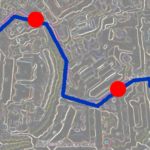We discuss the following topics in this blog:
- Challenges faced in deployment of fiber in big cities
- Problems with government agencies and solutions to them
In addition to these topics, we shall also be answering the following FAQs:
- What is an Optical Fibre Cable?
- What is WiFi?

Excerpt from a talk between Mr I Gede Darmayusa, CTO, XL Axiata Indonesia and Jitendra Balakrishnan, CTO, Connectivity Solutions at STL. They discuss the challenges faced in deployment of fiber in big cities. Problems with government agencies and solutions to them.
Jitendra: One of the challenges that we have, for example, and deploying optical fiber in India are things like the right of way our issues of how fibers are regulated or not regulated like a utility? And what the challenges are in actually densifying networks because we face something along those lines are just like like I would like to learn a little bit about, about what the equivalent the situation is in, Indonesia when you’re deploying fiber when you’re getting away from the access networks are more towards FTTx, so on and so forth what are the challenges that you typically face over there or what are some of the things?
Gede Darmayusa: India and Indonesia have almost the same Geographical area. Talking about the city If you see Jakarta straight now is getting better because government start to get rid of fiber to make it look more tidy or nice, but at the same time, we have challenges because which they have to connect. A few sites of some site in Jakarta fit fiber which now the permit is not being granted.
In one of the second biggest cities like Surabaya for instance we don’t have any permit now to lay new fiber because the sea fiber is really making the city look bad. We don’t even talk about putting this as utility, but they know perceive fiber really makes a mess in the city, this is something that’s a challenge in the big city Jakarta, Bandung and Surabaya, where this fiber is also needed most because of the capacity because later all 5G in the city. If it’s coming is it’s the city.
But at the same time, we are challenged online. A fiber preparation of 5G in between. We need to find a solution to get a with the government because the government is regulatory that, there can say yes or no sometimes cannot be negotiated. So we need to really sell the idea that fiber is for the people and for the community and for the city.
So, therefore, the government needs to facilitate not taking a tip of any fiber there we put so that’s the challenge and outside the area outside the city even it also has a special challenge Why? Because in the government body, if we want to apply permitted know almost like 11 permit need to get 11 permits for one span of fiber. So all the government needs to put signature on all every two months we get the increase in data but to build fiber in average is like one year that’s the challenge.
Like permit is very important. That’s still a challenge now would existing fiber for existing fiber, even though we have permit sometime from government and we want to extend the road they want to build at the utility power, water just can dig and cut our fiber without any information. So this challenge, because is not regulated even we have a permit. Is very challenging. So there is need to be changed. It to be in our communication with government through our association is will keep raising this concern.
And hopefully, at the end of the day, I think with this pandemic we should take some positive impact. That government of people now start realizing that how important is the Internet for important is the reliability of the network so we can push this back. We can push this back so regulatory of government start seeing this as a pain point for the operator to provide a network to the people.
FAQs
What is an Optical Fibre Cable?
An optical fibre cable is a cable type that has a few to hundreds of optical fibres bundled together within a protective plastic coating. They help carry digital data in the form of light pulses across large distances at faster speeds. For this, they need to be installed or deployed either underground or aerially. Standalone fibres cannot be buried or hanged so fibres are bunched together as cables for the transmission of data.
This is done to protect the fibre from stress, moisture, temperature changes and other externalities. There are three main components of a optical fibre cable, core (It carries the light and is made of pure silicon dioxide (SiO2) with dopants such as germania, phosphorous pentoxide, or alumina to raise the refractive index; Typical glass cores range from as small as 3.7um up to 200um), Cladding (Cladding surrounds the core and has a lower refractive index than the core, it is also made from the same material as the core; 1% refractive index difference is maintained between the core and cladding; Two commonly used diameters are 125µm and 140µm) and Coating (Protective layer that absorbs shocks, physical damage and moisture; The outside diameter of the coating is typically either 250µm or 500µm; Commonly used material for coatings are acrylate,Silicone, carbon, and polyimide).
An optical fibre cable is made up of the following components: Optical fibres – ranging from one to many. Buffer tubes (with different settings), for protection and cushioning of the fibre. Water protection in the tubes – wet or dry. A central strength member (CSM) is the backbone of all cables. Armoured tapes for stranding to bunch the buffer tubes and strength members together. Sheathing or final covering to provide further protection.
The five main reasons that make this technology innovation disruptive are fast communication speed, infinite bandwidth & capacity, low interference, high tensile strength and secure communication. The major usescases of optical fibre cables include intenet connectivity, computer networking, surgery & dentistry, automotive industry, telephony, lighting & decorations, mechanical inspections, cable television, military applications and space.
What is WiFi?
Put simply, WiFi is a technology that uses radio waves to create a wireless network through which devices like mobile phones, computers, printers, etc., connect to the internet. A wireless router is needed to establish a WiFi hotspot that people in its vicinity may use to access internet services. You’re sure to have encountered such a WiFi hotspot in houses, offices, restaurants, etc.
To get a little more technical, WiFi works by enabling a Wireless Local Area Network or WLAN that allows devices connected to it to exchange signals with the internet via a router. The frequencies of these signals are either 2.4 GHz or 5 GHz bandwidths. These frequencies are much higher than those transmitted to or by radios, mobile phones, and televisions since WiFi signals need to carry significantly higher amounts of data. The networking standards are variants of 802.11, of which there are several (802.11a, 802.11b, 801.11g, etc.).













